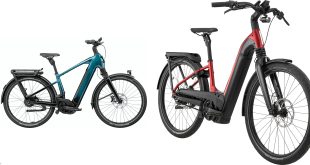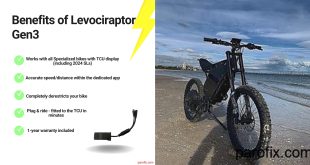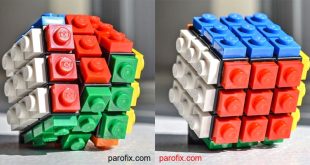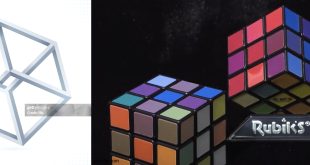Can a Self-Solving Rubik’s Cube Amaze You?
Remember the first time you tried solving a Rubik’s Cube? That dizzying swirl of colors that somehow seemed impossible to align? Now imagine a cube that solves itself—without your fingers twisting and turning it. Enter the self-solving Rubik’s Cube, a fascinating blend of robotics, sensors, and algorithms that brings a whole new dimension to a classic puzzle. But can it truly amaze you, or is it just a gimmick? Let’s dive deep.
Technical Details Behind the Magic
The self-solving Rubik’s Cube is no ordinary toy. Here’s what powers this technological marvel:
- Motors & Actuators: Tiny motors inside the cube rotate each layer independently. Precision is key, and these micro-actuators are designed to handle rapid movements without jamming.
- Sensors: Embedded gyroscopes and color sensors detect the cube’s current configuration. They “see” the color alignment of each face, allowing the cube to map out a solving path.
- Algorithms: Advanced solving algorithms, often derived from Kociemba’s or Thistlethwaite’s methods, calculate the most efficient sequence of rotations. Some cubes can solve in under 20 moves, while others prioritize smoothness over speed.
- Battery & Power: Rechargeable lithium-ion batteries power the motors and sensors, typically offering dozens of solving cycles per charge.
- Connectivity: Some modern versions pair with mobile apps via Bluetooth, allowing you to scramble, track solving times, or even customize solving styles.
From a technical standpoint, it’s a miniature robot disguised as a toy—an impressive engineering feat that combines hardware and software in a palm-sized package.
Experiencing the Cube in Action
Watching a self-solving Rubik’s Cube work for the first time is like seeing magic meet mechanics. I remember attending a robotics demo where the cube sat idle for a moment, then began twisting, turning, and aligning itself with almost hypnotic precision. By the time it clicked into the final solved state, a crowd of onlookers had erupted in applause—because seeing something autonomous complete a task we struggled with ourselves triggers genuine awe.
What’s particularly fun is experimenting with different scrambling patterns. No matter how chaotic the mix, the cube systematically works through the solution. For beginners, it’s a lesson in problem-solving logic; for experienced cubers, it’s a playful rivalry against AI in a 3D puzzle arena.
Practical Usage Tips
- Keep it clean: Dust and debris can hinder the motors. A light wipe and occasional compressed air blow can prolong the cube’s lifespan.
- Recharge regularly: Lithium batteries perform best when not fully drained. Charge after every few solving sessions.
- Handle gently: Although the cube is designed for movement, aggressive force can damage internal mechanisms.
- App Integration: Explore mobile apps to scramble the cube or track solving statistics—turning every session into a mini-competition or learning experience.
- Experiment: Try switching between speed-solving and slow, elegant solves. Watching it solve slowly can be mesmerizing and educational at the same time.
Trends, Technology, and Sustainability
While the self-solving Rubik’s Cube might seem far removed from sustainable transportation, it embodies trends that resonate across technology sectors, including e-mobility:
- Miniature Robotics: Small-scale automation, like the cube, translates to larger applications in e-bikes and other electric vehicles, where sensor-driven adjustments optimize efficiency.
- Energy Efficiency: The cube’s micro-motors are optimized to consume minimal power—similar principles are applied to motorized bikes and scooters.
- Smart Systems: Connectivity and AI-driven problem-solving hint at the future of smart urban mobility, where systems adjust in real-time for efficiency and safety.
- Future Trends: Expect more interactive cubes with enhanced AI, app integration, and even educational platforms. The goal is to combine fun, learning, and technology seamlessly.
Frequently Asked Questions
How fast can a self-solving Rubik’s Cube solve itself?
It varies. Most consumer models solve in 30–60 seconds, but advanced prototypes can complete a solve in under 10 seconds using ultra-efficient algorithms and high-speed motors.
Do I need to know how to solve a Rubik’s Cube to enjoy it?

Not at all. The cube is designed to entertain and educate. Beginners can watch and learn while experienced cubers may analyze its algorithmic approach.
Is it durable?
Modern self-solving cubes are built to withstand repeated rotations. However, rough handling or drops can misalign motors or damage sensors. Gentle use and occasional cleaning ensure longevity.
Can it help me improve my cubing skills?
Absolutely. Observing the solving algorithm offers insight into move efficiency, layer strategies, and pattern recognition—a unique learning tool for aspiring speedcubers.
Is it worth the price?
Depends on your interest. For tech enthusiasts, puzzle lovers, and educators, it’s a fascinating investment. For casual players, a traditional cube may suffice—but the wow factor of watching a cube solve itself is unmatched.
Personal Stories and Observations
One evening, I challenged a group of friends to a “cube duel”: they scrambled their traditional cubes while I set the self-solving cube in motion. The amazed reactions ranged from laughter to genuine astonishment as the cube methodically untangled chaos in ways that seemed almost human. The best part? It sparked curiosity and conversation about robotics, algorithms, and even the physics of rotational mechanics.
Another time, a classroom demonstration with middle school students revealed a similar phenomenon. Students who struggled with manual solving suddenly became captivated by the cube’s “intelligence,” leading to discussions on problem-solving, logical reasoning, and how technology can make learning interactive.
Practical Applications Beyond Fun
While primarily a puzzle and tech toy, the underlying principles of a self-solving cube have real-world applications:
- Autonomous robotics in warehouses or delivery systems.
- AI-driven optimization in electric vehicles and smart mobility.
- Educational tools for teaching algorithms, coding, and problem-solving.
- Prototyping miniature actuators and sensors for wearable tech.
Final Verdict: Does It Amaze?
Yes, it does. The self-solving Rubik’s Cube is more than a novelty; it’s a demonstration of engineering, programming, and innovation. It inspires curiosity, offers educational value, and triggers that satisfying sense of wonder when a small object achieves what seems impossible. For tech enthusiasts, puzzle fans, and educators, it’s a small but powerful marvel. And for anyone who grew up twisting colors in frustration, it’s a reminder that technology can turn challenge into awe-inspiring simplicity.
Highlighted Tip: Use the self-solving cube as both an educational tool and a meditation device. Watching its deliberate movements can improve focus, inspire creative thinking, and give a quiet thrill of technological marvel.
So yes—while it won’t replace your love for manual cubing, the self-solving Rubik’s Cube does something equally compelling: it amazes, educates, and entertains, all in the span of a few mesmerizing twists and turns.
 Electric Bike & Bicycle Repair Hub Master DIY electric and traditional bike repairs with practical tips and trusted product recommendations.
Electric Bike & Bicycle Repair Hub Master DIY electric and traditional bike repairs with practical tips and trusted product recommendations.



